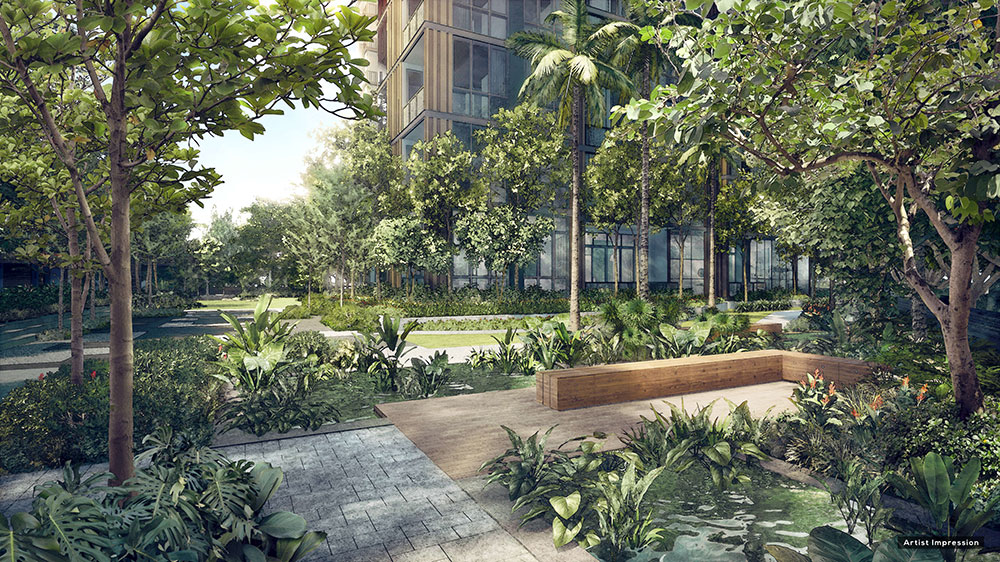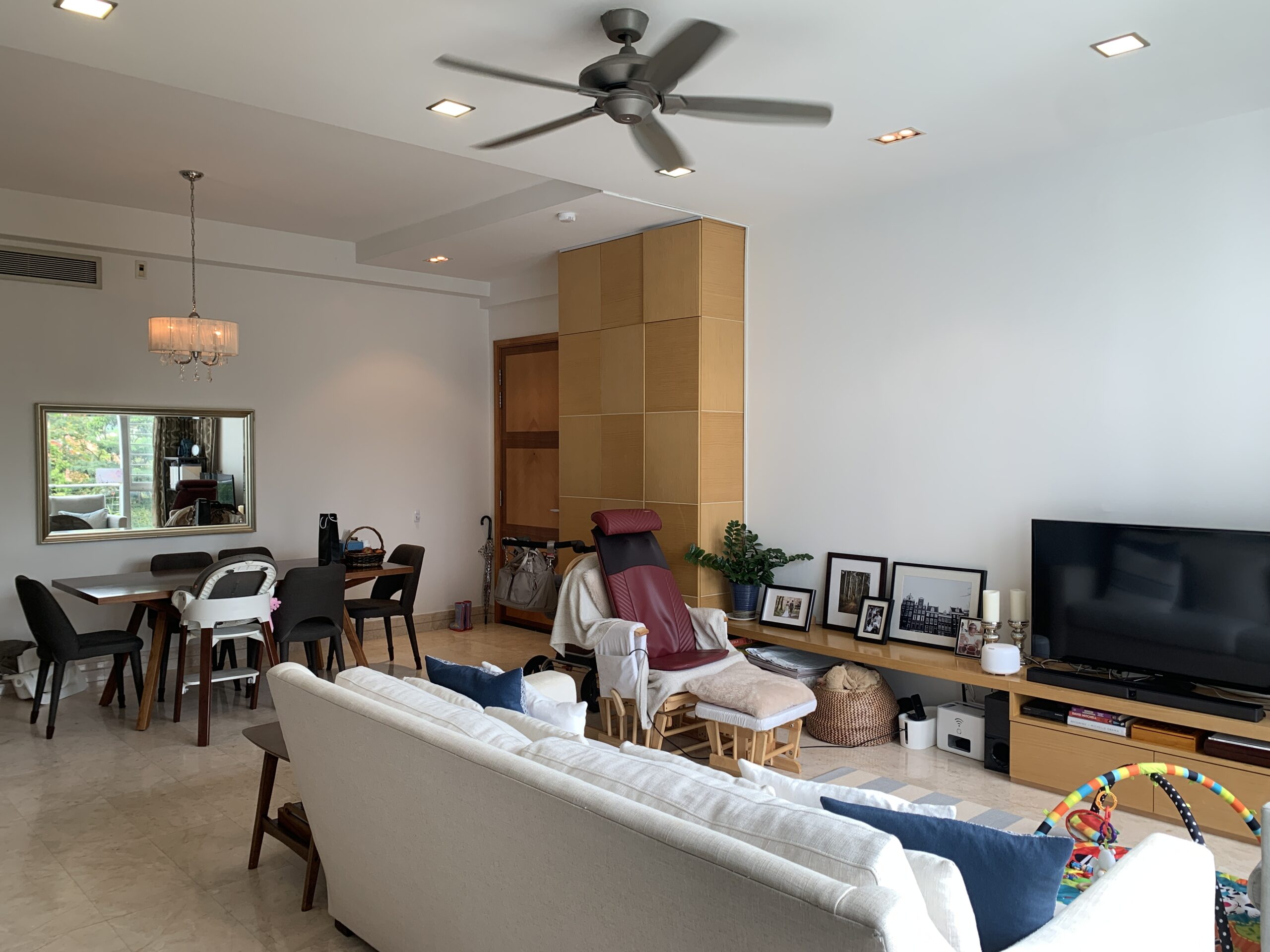AFTER planning for more than two decades, the High Commission of India in Singapore will go ahead with developing a new, bigger chancery here.
“This time, it’s for real,” said India’s High Commissioner to Singapore Jawed Ashraf, who said he hopes that construction for the facility along Stevens Road can start by the end of April or May.
“I think we’ve waited too long. Singapore is an extremely important partner for India, and one of our most active missions globally. It’s important that we have this infrastructure over here as quickly as possible.”
In a recent interview with The Business Times, he also disclosed that he expects the development at 54 Stevens Road to be completed, and the chancery moved from its current Grange Road premises by mid-2023.
The Stevens Road site now has 12 apartments in two blocks of three storeys each on the 94,026-square-foot plot – homes for support staff. With the upcoming demolition of these blocks, the High Commission is looking for temporary accommodation for these employees, who will move back to the site when the new development is ready.
The High Commission owns both the Grange and Stevens Road properties, which are freehold. It submitted a planning application for the proposed development to Singapore’s Urban Redevelopment Authority last September.
URA responded in November, saying that the proposal could be supported, subject to the successful rezoning of the site from that for residential use with 1.4 gross plot ratio to civic and community institution use. The High Commission has since submitted an application for the site’s rezoning.
The authority also advised the high commission to obtain clearances from the various technical agencies.
Mr Ashraf said that the need for the new chancery is “very pressing because our engagement with Singapore is growing very rapidly”.
“We need to build something that meets the needs of the mission, both with respect to our bilateral relations, but also to be able to deal with the exponential growth in our local activities, partly because we now have a very large diaspora here.
“We also do so much by way of culture, conferences, summits, business events and exhibitions.”
He said he could not disclose the estimated development cost for the Stevens Road project, but added: “It will be entirely paid for by the government of India.”
The High Commission will not be selling any of its other two properties here to fund the Stevens Road project. Besides 31 Grange Road, it owns 2 Peirce Road, the residence of the High Commissioner. This property sits on 145,109 sq ft of freehold land in a Good Class Bungalow Area.
Mr Ashraf acknowledged that deciding the location for the new chancery had taken a long time.
“There was obviously sentiment attached to retaining 31 Grange Road as a chancery and redeveloping it, rather than moving to another location, because we’ve been on Grange Road since 1948,” he said.
However, if that site were to be redeveloped into the new chancery today, the GFA would be just 10 per cent more than the approved/existing GFA. This is because building a new chancery would not be in keeping with the site’s residential zoning.
This would have been “grossly inadequate” for the Indian High Commission’s expanding needs in Singapore. “It will have made no sense to us,” says Mr Ashraf.
It thus makes more sense to put the Grange Road site to residential use, given that it has a 2.8 plot ratio (ratio of gross floor area to land area). The site has a freehold land area of 42,356 sq ft.
After the Stevens Road developement is completed and the chancery moves there, the plan is to redevelop the Grange Road plot.
Market watchers expect URA to encourage the High Commission to conserve the colonial-era bungalow that sits on the front portion of the site. This is where the High Comissioner’s office is currently located.
However, the newer structure abutting the rear of the bungalow, where the visa and consular services are provided, will make way for an apartment tower. These will serve as residences for the High Commission’s diplomatic officers who now live in nearby rented condo units.
The restored bungalow in front could be put to ceremonial use or be turned into the residence of the deputy High Commissioner.
The High Commission is not likely to tap the full 2.8 residential plot ratio allowed for the site, Mr Ashraf indicated. Planning, including groundwork on design and approvals for the Grange Road property, will start once construction of the Stevens Road project has begun; this should make it possible for the works at the Grange Road site to kick off soon after the High Commission has moved into Stevens Road.
The proposed development in Stevens Road will have a total gross floor area (GFA) of 11,582.65 square metres (about 124,674 square feet), the bulk of which (about 86,000 sq ft) will be for a four-storey chancery block.
“We will have a big lawn, and a basement car park for 90 cars. Besides the offices and a consular wing for visa and passport services, we’ll have a number of other facilities, including an auditorium with 500-600 retractable seats,” said Mr Ashraf.
The third level will have a holding area in the middle, flanked by the auditorium on one side and seminar rooms on the other. Beyond the holding area will be a covered terrace.
The seminar rooms can be opened up, which means the entire floor can be turned into a seamless reception area with a capacity for about 1,000 people. The fourth floor will have a roof garden.
The chancery will also have a gallery, where Indian art and crafts can be displayed, and a library. “These facilities are particularly important because we have an active cultural calendar in Singapore,” said Mr Ahsraf.
“We are also looking to have a continuous series of events, and conferences on business, technology, innovation, finance, politics and defence, because this is an important region for us and we feel we need this facility to come up quickly.”
The Stevens Road development will also include a five-storey residental block with 17 apartments to house the majority of the staff members from India. The development will be built to Platinum standard in environmental sustainability.
“We’re still working on what our facade will be; we might import sandstone from India,” said Mr Ashraf.
Shing Design Atelier, the architect and lead consultant for the Peirce Road project, has been appointed in the same role for the Stevens Road project.
The Indian Government bought the Peirce Road bungalow and the Grange Road property (with the bungalow on the site) in 1948. It bought the Stevens Road property in 1949.
In the mid-1990s, a tree fell on the Peirce Road bungalow, which was already in a state of disrepair. The High Commission restored it from 2007-2009, and the property bagged an Architectural Heritage Award from the URA in 2009.
Adapted from The Business Times, 25 Feb 2020








